Back to Don's Maps
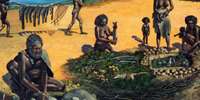 Back to Animals of Lake Mungo
Back to Animals of Lake MungoMungo Feral Animals
Click on the photos to see an enlarged version
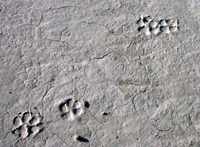
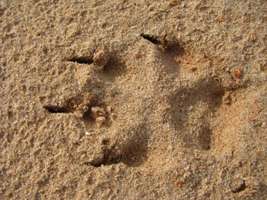
Dingo paw prints. Dingoes would not have been present at the time of Mungo Man. Dingoes came to Australia from South East Asia around 5 000 years ago.
Photo: Don Hitchcock 2005, 2009
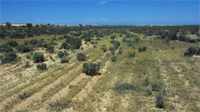
This area has been ripped in order to destroy rabbit warrens, and is now in the process of recovery. The natural vegetation has begun to recolonise the area.
Photo: Don Hitchcock 2005

A goat contributing to the future fossil beds of Lake Mungo. The lower foot has little meat, which is the reason it has not been stripped to the bone by scavengers as the rest of the leg has.
Photo: Don Hitchcock 2005
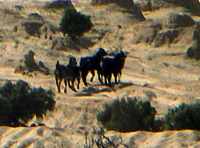
Feral goats are active agents of erosion.
Photo: Don Hitchcock 2005
 One of the first animals used by the early settlers to provide milk and meat was the goat. Along with pigs, cattle, horses and donkeys, goats have become feral. Populations of these animals over the generations have become survivors in the arid zone. Goats cause great damage to young trees and the vegetation generally. This holds back the regeneration of the living system, particularly on the lunette.
One of the first animals used by the early settlers to provide milk and meat was the goat. Along with pigs, cattle, horses and donkeys, goats have become feral. Populations of these animals over the generations have become survivors in the arid zone. Goats cause great damage to young trees and the vegetation generally. This holds back the regeneration of the living system, particularly on the lunette.
Text and sign: NPWS Lake Mungo
Photo: Don Hitchcock 2005
 Round Tank is used as a trap for the goats sheltering in the back country scrub. Water is the bait. The goats run up the ramp and leap into the enclosure. They are unable to escape. these animals are caught and trucked away in a humane manner. The word Tank is used in this area to denote a usually man-made depression which creates its own water catchment, with water collecting at the deepest point.
Round Tank is used as a trap for the goats sheltering in the back country scrub. Water is the bait. The goats run up the ramp and leap into the enclosure. They are unable to escape. these animals are caught and trucked away in a humane manner. The word Tank is used in this area to denote a usually man-made depression which creates its own water catchment, with water collecting at the deepest point.
Trapping and other control measures are never ending tasks because feral animals continuously enter the park from adjoining areas.
Text and sign: NPWS Lake Mungo
Photo: Don Hitchcock 2005

This is the entrance to the trap. Goats run up this ramp and leap into the enclosure.
Photo: Don Hitchcock 2005
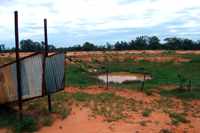
This is the loading ramp for trapped goats being taken elsewhere.
Photo: Don Hitchcock 2005
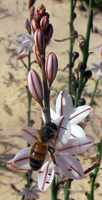
European bee on a lily. It is interesting that honeybees have adapted well to arid conditions. There are many different species of native bees which are stingless, but are not so well adapted to the honey industry.
Photo: Don Hitchcock 2005